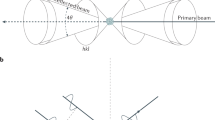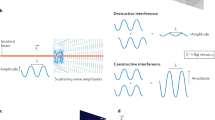Abstract
ALTHOUGH humic substances are some of the most important naturally occurring macromolecules in both soil and aqueous environments, their structures are still unknown. Our understanding of the components which comprise humic mixtures has been confined to the analysis of only minor portions (5–10%) of the total humic entity. It is, however, the whole humic aggregate, most of which is structurally unknown, which plays an active nutritional or transport role in nature. When the major fraction of humic matter, the alkali soluble substances, are studied, only poorly defined spectra have been obtained. Infrared, 1H-NMR and 13C-NMR spectroscopic techniques have yielded unresolved spectra in which little detail can be distinguished1–5. We report here that, using large magnetic fields and very high frequency (270 MHz) Fourier transform 1H-NMR instrumentation, we have found that a wealth of detail can be obtained on the structure of humic solutions. A convolution difference method6 allows discrete signals to be detected above the general broad band absorptions in much the same way as important structural and dynamic information concerning proteins has been gathered.
This is a preview of subscription content, access via your institution
Access options
Subscribe to this journal
Receive 51 print issues and online access
$199.00 per year
only $3.90 per issue
Buy this article
- Purchase on Springer Link
- Instant access to full article PDF
Prices may be subject to local taxes which are calculated during checkout
Similar content being viewed by others
References
Schnitzer, M. & Khan, S. U. Humic Substances in the Environment (Marcel-Dekker, New York, 1972).
Luedemann, H. D., Lentz, H. & Ziechmann, W. ErdolKohle-Brennstoff-Chem. 26, 506–509 (1973).
Oka, H., Sasaki, M., Itoh, M., Suzuki, A. Nenryo kyokai-shi 48, 295–302 (1969).
Wilson, M. A. & Goh, K. M. Pl. Soil 46, 287–289 (1977).
Wilson, M. A. & Goh, K. M. J. Soil Sci. 28, 645–652 (1977).
Campbell, I. D., Dobson, C. M., Williams, R. J. P. & Xavier, A. V. J. Magn. Res. 11, 172 (1973).
Brown, J. K. & Ladner, W. R. Fuel 39, 87–96 (1960).
Retcofsky, H. L., Schweighardt, F. K. & Hough, M. Analyt. Chem. 49, 585–588 (1977).
Grant, D. Nature 270, 709–710 (1977).
Neyroud, J. A. & Schnitzer, M. Can. J. Chem. 52, 4123–4132 (1974).
Ishiwatari, R. Chem. Geol., 12, 113–126 (1973).
Sciacovelli, O., Senesi, N., Solinas, V. & Testini, C. Soil Biol. Biochem. 9, 287–293 (1977).
Anderson, H. A. & Russell, J. D. Nature 260, 597 (1976).
Wershaw, R. L. & Pinckney, D. J. Science 199, 906–907 (1978).
Weber, J. H. & Wilson, S. A. Water Res. 9, 1039–1084 (1975).
Author information
Authors and Affiliations
Rights and permissions
About this article
Cite this article
WILSON, M., JONES, A. & WILLIAMSON, B. Nuclear magnetic resonance spectroscopy of humic materials. Nature 276, 487–489 (1978). https://doi.org/10.1038/276487a0
Received:
Accepted:
Issue Date:
DOI: https://doi.org/10.1038/276487a0
This article is cited by
-
Humic soil and coal structure study with magic-angle spinning 13C CP-NMR
Nature (1981)
-
Indigenous 13C-NMR structural features of soil humic substances
Nature (1981)
-
Cross-polarization 13C NMR spectroscopy of whole soils
Nature (1980)
-
Structural characteristics of fulvic acids from Continental Shelf sediments
Nature (1980)
Comments
By submitting a comment you agree to abide by our Terms and Community Guidelines. If you find something abusive or that does not comply with our terms or guidelines please flag it as inappropriate.



